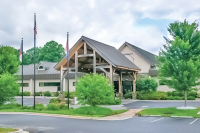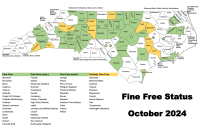Jail spending doesn’t solve problems

To the Editor:
Budgets, it has been said, are moral documents. This is because how a community chooses to spend and invest its money demonstrates the priorities of that community and, ultimately, our values. More than just a dry process of bureaucracy, budgets shape our future and impact who we, together, will become.
Building a $16.5 million dollar jail in Haywood County is a moral failure, as well as a strategic one. During the worst economic crisis that many of our local residents will ever live through, this egregious expenditure feels like a slap in the face to local working folks. The jail is one of the biggest lines in our county’s current budget proposal, stealing funds from public hospitals, schools, social services, roads and other essential services that all of us badly need.
Jail expansion is rarely a good answer to legitimate concerns about crime and frequently triggers a vicious cycle: Adding new jail beds often leads to increased pretrial detention meaning that bigger jails are quickly filled and taxpayers are on the hook for this ever-increasing expense. We have already seen this in Haywood County: after more than tripling our jail capacity in 2004, the incarceration rate increased by 47 percent over the next six years (U.S. Department of Justice), bringing us to our current “need” today. Moreover, the cost of a new jail will be substantially higher than the initial investment, with studies showing that the capital costs needed to build a jail end up being less than 10 percent of the total cost for the facility over time (Vera Institute, 2015).
In Haywood County, it’s clear that locking people up simply isn’t working. This continued increase in incarceration shows us that there are policies and practices in our community driving this growth that must be addressed. Instead of spending $16.5 million to build a new jail, we could and should invest in alternatives to incarceration such as affordable housing, education, healthcare and resources that would improve the quality of life and safety for all our residents.
A Western Carolina University study found that more than 85 percent of people in the Haywood County jail showed signs consistent with a substance use disorder; more than half the jail population had symptoms of PTSD; and a third had symptoms of major depression (Lilly Knoepp, Blue Ridge Public Radio, 2019). The over-representation of poor people and of people suffering from mental health disorders in jails are an example of this budgeting moral failure: we are spending our money on poverty and mental health but in the most costly and most unkind budget line.
Not only is the $16.5 million dollar jail a budget failure, but it’s also lacking the bravery, imagination and incentive of hope that our community desperately needs. At Down Home North Carolina, we share our neighbor’s concerns about crime, poverty, the overdose crisis and the affordable housing crisis. But we look to our own local history and local data to know that we cannot police or jail our way out of these problems. The rate at which Haywood County locks people up has grown dramatically over the last decade. Between 2000 and 2018, Haywood’s jail incarceration rate increased 133 percent while the county working-age population increased only 8.4 percent.
Our county budget should serve our community, but expanding the jail fails both those who might be incarcerated as well as those who are footing the bill. Before an architect is hired or ground is broken, our community leaders must identify less costly opportunities to reduce incarceration and expand real services in Haywood County.
Down Home members here in Haywood County have created an alternative budget proposal that we will be presenting to the county commission this month that includes ways to reduce crime and reduce incarceration while balancing a moral budget that builds a Haywood for all.
Jesse-Lee Dunlap,
Down Home North Carolina
Haywood County





